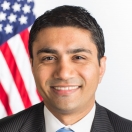
Vulnerable communities around the country are transforming their neighborhoods through collaborative partnerships. When their voices, ideas, and visions are honored, amazing things can happen.
Almost 20 years ago, residents in Spartanburg, South Carolina, began to formulate their vision for change. It started with assistance from EPA’s regional office in Atlanta, when the community discovered the sources of public health and environmental problems in their neighborhoods. As a former mill town, Spartanburg had faced disinvestment for many years. As manufacturing facilities shut down, a 30 acre dump site and a three acre site with leaking underground storage tanks was left behind, exposing residents to toxic air and water pollution.
But that wasn’t the end of the story of Spartanburg; it was the beginning of the revitalization and renewal of the community. In 1997, longtime resident Harold Mitchell prompted EPA to investigate the causes of rare cancers and respiratory diseases that were affecting his family, friends, and neighbors in Spartanburg. The link to the legacy of pollution from years past became clear. Mitchell soon founded a program called ReGenisis to address these significant environmental concerns and to reverse the blight, disinvestment, and hopelessness impacting the neighborhood.
Over the last 20 years ReGenesis has led a collaborative and transformational effort to revive Spartanburg. It started with a $20,000 EPA environmental justice small grant, a program that has provided over $24 million to over 1,400 community-based organizations. Mr. Mitchell and his community members did something extraordinary – they leveraged that $20,000 into more than $300 million in public and private funding to turn things around. With investments from federal, state, and local government, as well as private foundations, ReGenisis spearheaded the effort to clean up the Superfund sites, bring in 500 affordable housing units, six health clinics, job training programs and many other amenities that sparked far-reaching positive changes in Spartanburg. This model inspired EPA to develop its Collaborative Problem Solving (CPS) Model and subsequent CPS grant program.
Today, I had the opportunity to participate in the first Clean Energy Savings for All Summit to highlight one of the crowning achievements of the revitalization effort in Spartanburg: the Arkwright Solar Farm, which is being built directly on top of one of the Superfund sites that was responsible for environmental contamination in the community. It’s a powerful symbol of the transformation that has happened in these communities. What once was a source of pollution and blight, the former Arkwright landfill is now being covered with 12,000 solar panels that will bring jobs and a source of clean energy that can power almost 500 homes in the surrounding neighborhoods.
For authentic and sustainable change to happen, it must be driven by communities. The story of Spartanburg is a lesson in how government can partner with communities, empower them to find solutions to their problems, and develop innovative and collaborative strategies to make them a reality. The solar farm is the latest chapter in the story of the revitalization of Spartanburg, and we are excited to continue to raise awareness of these examples so other communities across the country can follow the path from surviving to thriving.


